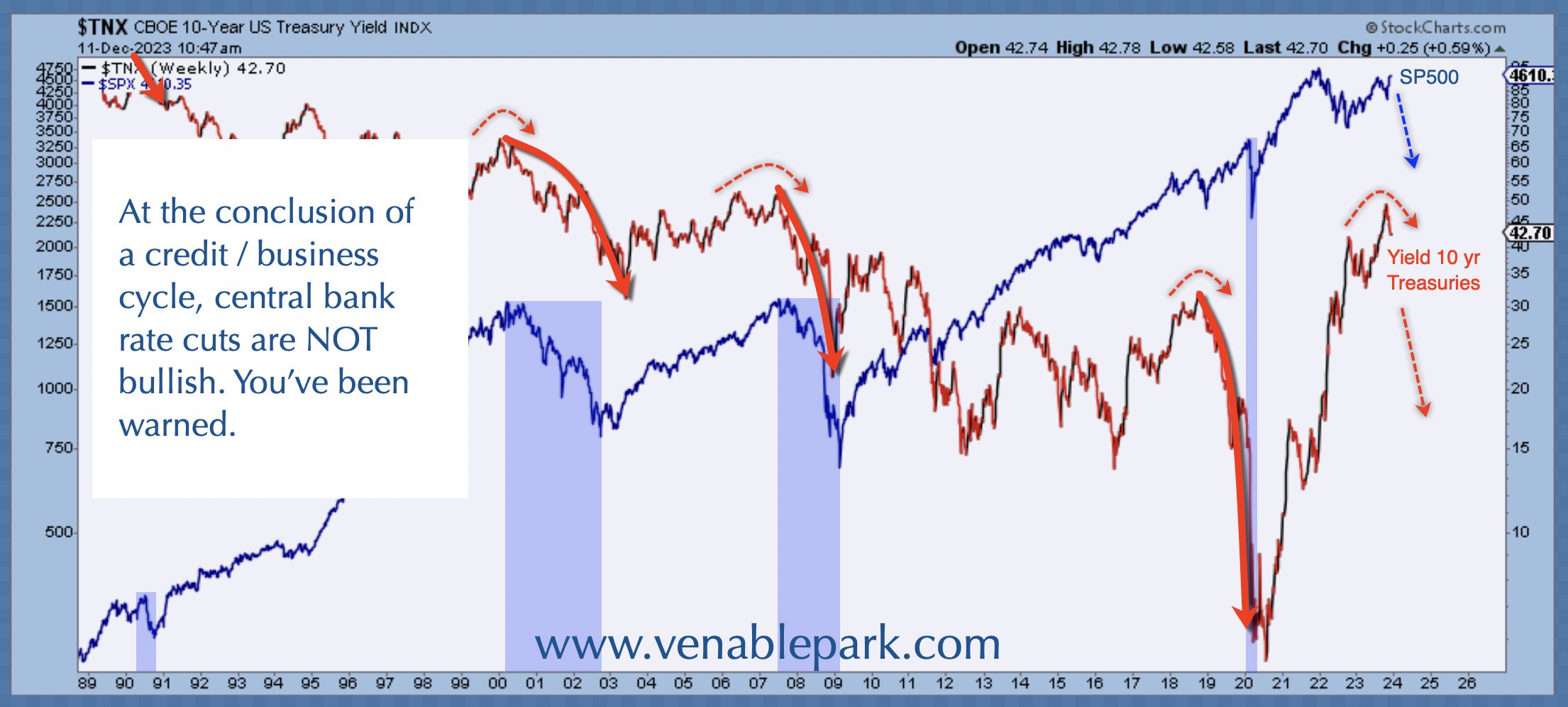Consumer spending drives some 58% of Canada’s economic growth and 68% in America, so when households are blindsided by higher carrying costs and deteriorating employment, financial weakness compounds through the economy to lower revenues for companies and governments. See more on the current US job cycle in ECRI, Unveiling the Cyclical Reality of Jobs Growth:
Our research questions the complacency surrounding employment growth, suggesting an impending downturn as cyclical job losses loom. This counters the popular belief in a soft-landing, underpinned by the expectation of job market stability. To resolve the contradictions, we delve deeper into the U.S. employment outlook.
Canadian consumer debt reached $2.9 trillion in the third quarter ($2.2 trillion is mortgages), and households needed 15.4% of their disposable income to cover debt payments compared with 13.6% in 2020 and 13.2% at the US consumer debt peak prior to the 2008 financial crisis. As fixed loan terms come up for renewal at higher interest rates, payments will take an even larger portion of disposable income (see Canada’s mortgage crunch is already hitting the economy–and it’s going to get worse).
Even economists at sell-side bank-broker conglomerates are warning about a consumer-led downturn in 2024 (see a recent segment below of James Orlando, Senior TD Economist, discussing TD’s latest forecast). Here is a direct video link.
Of course, wealth management manglement arms are still recommending customers buy and hold corporate securities with the bulk of their wealth even though equities have routinely lost 40%+ during past recessions. Product-pumpers, got to pump, after all.
Central bank rate cuts will start next year, but there will be no quick fix for what ails here.
Bond yields set fixed-term loan rates, and it’s typical for the 10-year Treasury yield to roll over near the end of Fed tightening cycles (see red arrows below since 1989, courtesy of my partner Cory Venable) as government bond prices rise–that’s been happening since early October.
Job losses and credit defaults eventually bring central banks back to cutting short-term policy rates, and that’s when stock markets really tumble (S&P 500 in blue below)–more than 80% of bear market losses have historically happened while central banks are easing, not before. Eyes open!


